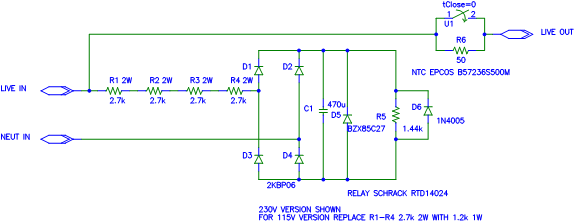I recommend the use of nylon 12mm spacers to mount the PCB on so that you can achieve good insulation clearance between mains live parts and chassis. It is also important that you raise the four input resistors and the zener diode up off the board by 6mm or so to aid their heat dissipation. If you fail to do this the PCB will char over time and you may develop issues with bad joints.
 PDF of copper side of PCB
PDF of copper side of PCB
 PDF of component side of PCB
PDF of component side of PCB


